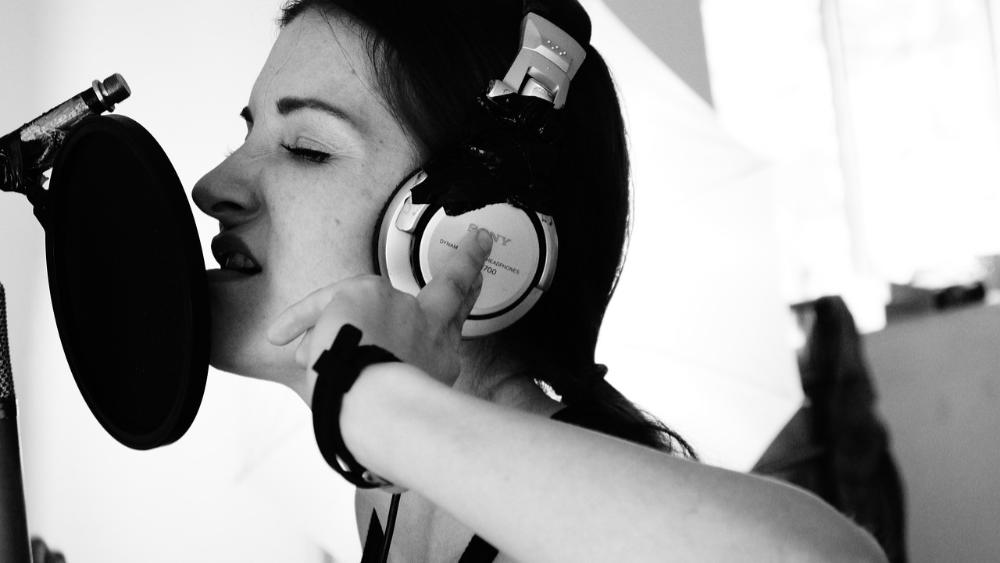Estimated reading time: 11 minutes
As a music lover, I have always been fascinated by the power and beauty of a vocalist’s voice. Whether it’s the soaring notes of a soprano in an opera or the smooth, soulful tones of a pop singer, vocalists have the ability to captivate and move us with their talent. But what exactly is a vocalist? In simple terms, a vocalist is an individual who uses their voice as their instrument to create music. They are the ones who bring the lyrics to life and convey emotions through their vocal performance.
Table of contents
What is a Vocalist?
A vocalist is someone who possesses the ability to use their voice in a skilled and expressive manner to sing or perform. They have a deep understanding of vocal technique, which allows them to produce a wide range of sounds and tones. Vocalists have the ability to control their vocal cords, manipulate their breath, and modulate their voice to create different vocal styles and effects.
Vocal Technique and Its Importance
Vocal technique is the foundation of a vocalist’s skill set. It involves the proper use and control of the vocal apparatus, including the vocal cords, breath support, resonance, and articulation. By mastering vocal technique, a vocalist can improve their vocal range, control, and overall performance. It is crucial for a vocalist to understand and practice proper vocal technique to prevent vocal strain and injury.
Overview of Vocal Techniques
| Aspect of Vocal Technique | Description | Importance |
|---|---|---|
| Breath Support | Proper control and management of breath flow. | Essential for sustaining long phrases, maintaining consistent tone quality, and preventing vocal fatigue. |
| Vocal Cord Control | Ability to manipulate vocal cords for pitch, tone, and resonance. | Crucial for achieving accurate pitch, controlling dynamics, and producing a variety of vocal effects. |
| Resonance | Utilization of vocal resonators for richness and depth in sound. | Enhances vocal timbre, adds warmth to the tone, and improves projection and clarity. |
| Articulation | Clarity and precision in pronunciation and diction. | Facilitates clear communication of lyrics, ensures audience comprehension, and contributes to stylistic expression. |
| Vocal Health Maintenance | Practices to preserve vocal health and prevent injury. | Vital for sustaining a long-term singing career, minimizing vocal strain, and maximizing vocal longevity. |
| Range Expansion | Techniques to extend vocal range and flexibility. | Enables versatility in repertoire selection, allows for tackling challenging vocal pieces, and enhances expressiveness through access to a broader range of pitches. |
| Dynamics Control | Ability to modulate volume and intensity of the voice. | Adds depth and emotional nuance to vocal performances, enhances musical interpretation, and creates dramatic contrasts within songs. |
| Vibrato Control | Skill in regulating vibrato for expressive effect. | Adds warmth, richness, and emotional depth to the voice, enhances musical phrasing, and contributes to a polished and professional vocal delivery. |
| Registers Transition | Seamless transition between vocal registers (chest, head, mix). | Ensures a smooth and connected vocal sound across the entire range, eliminates vocal breaks or cracks, and allows for consistent tonal quality throughout the voice. |
| Pitch Accuracy | Precision in hitting and maintaining correct pitches. | Essential for musical accuracy, harmonization with accompanying instruments or vocalists, and conveying intended musical expression with clarity and confidence. |
Exploring Different Vocal Styles
Vocalists have the freedom to explore and experiment with different vocal styles, depending on the genre of music they are performing. From classical singers who focus on perfecting their technique and performing operatic arias, to pop stars who incorporate dance routines into their performances, each vocalist brings their own unique style to the table. Some vocalists specialize in specific genres such as jazz, R&B, or rock, while others may have a versatile style that allows them to adapt to various genres.
| Vocal Style | Description |
|---|---|
| Classical | Focus on technique, often associated with operatic singing. |
| Pop | Emphasis on catchy melodies, relatable lyrics, and commercial appeal. |
| Jazz | Characterized by improvisation, syncopation, and expressive phrasing. |
| R&B | Soulful vocals, often incorporating elements of rhythm and blues. |
| Rock | Powerful vocals with emphasis on energy and emotion. |
| Country | Narrative storytelling, twangy vocals, and folk influences. |
| Hip-hop/Rap | Rapid delivery, rhythmic flow, and lyrical prowess. |
| Metal | Aggressive vocals with distortion and vocal fry techniques. |
| Gospel | Emotional and uplifting vocals, often with strong harmonies and call-and-response elements. |
| Folk | Honest and heartfelt vocals, often accompanied by acoustic instruments. |
Vocal Abilities and the Music Industry
Vocal abilities play a crucial role in the success of a vocalist in the music industry. A vocalist with exceptional range, control, and tone has the potential to stand out and make a lasting impact. The music industry recognizes and celebrates vocal talent, as it is often the defining factor that sets an artist apart from the rest. Artists like Justin Bieber, known for his smooth vocals and catchy pop songs, have gained worldwide fame due to their exceptional vocal abilities.

Unique Vocal Techniques: Scat Singing, Throat Singing, and More
In addition to traditional vocal techniques, there are unique and unconventional vocal styles that have gained popularity over the years. Scat singing, for example, is a technique where vocalists use nonsensical syllables to improvise melodies and rhythms. Throat singing, on the other hand, is a technique practiced by certain indigenous cultures where vocalists produce multiple pitches simultaneously. These unique vocal techniques add a distinct flavor to a vocalist’s repertoire and showcase their versatility and creativity.
| Vocal Technique | Description |
|---|---|
| Scat Singing | Improvised vocalization using nonsensical syllables and rhythms. |
| Throat Singing | Technique where vocalists produce multiple pitches simultaneously. |
| Beatboxing | Vocal percussion, creating rhythmic beats and sounds with the mouth. |
| Vocal Fry | Low-pitched, creaky sound produced by partial closure of vocal cords. |
| Falsetto | High-pitched singing using a breathy, light quality. |
| Overtones | Producing multiple pitches simultaneously through vocal resonance. |
| Vocal Trills | Rapid alternation between two adjacent pitches. |
| Growling | Gravelly, guttural vocal effect achieved through vocal distortion. |
The Role of Vocal Style in Popular Music
Vocal style is a crucial element of popular music. It defines the overall sound and identity of a vocalist and can greatly influence the success of a song. Different vocal styles evoke different emotions and resonate with different audiences. From the smooth and sultry tones of a jazz singer to the powerful and emotive vocals of a rock vocalist, each style brings its own unique character to the music.
Vocalists in Different Genres: Classical Singers, Pop Stars, and More
Vocalists can be found in a wide range of genres, each with its own set of vocal requirements and expectations. Classical singers, for example, undergo rigorous training to perfect their technique and deliver operatic performances. Pop stars, on the other hand, focus on catchy melodies and relatable lyrics to connect with their audience. Other genres such as country, hip-hop, and metal also have their own vocal styles and techniques that define the genre.
Developing Captivating Voices and Vocal Performances
Captivating voices and vocal performances are the result of a combination of factors, including natural talent, vocal training, and artistic expression. Vocalists spend years honing their craft, developing their unique sound, and perfecting their performance skills. They work on their vocal range, control, and expression to create captivating performances that leave a lasting impression on their audience.
The Importance of Vocal Training and Voice Teachers
Vocal training is essential for any aspiring vocalist. Voice teachers provide guidance and coaching to help vocalists develop proper technique, expand their vocal range, and improve their overall performance. They help vocalists understand their voice and teach them how to use it effectively. Through vocal exercises, warm-ups, and personalized instruction, voice teachers play a crucial role in the development of a vocalist’s skills and abilities.

Vocal Registers and Vocal Range
Vocal registers refer to different parts of the vocal range where the voice resonates. The most common registers are chest voice, which is the lower part of the range, and head voice, which is the higher part of the range. Vocalists learn to transition smoothly between registers to create a seamless and balanced sound. Vocal range, on the other hand, refers to the span of notes a vocalist can comfortably sing. Developing a wider range allows vocalists to tackle a wider variety of songs and showcase their versatility.
Recording Studio and Technical Abilities for Vocalists
In today’s music industry, vocalists often find themselves in the recording studio, where technical abilities are crucial. Vocalists need to be able to adapt to the studio environment, work with different recording techniques, and deliver consistent and high-quality performances. They need to be able to take direction from producers and engineers, and understand how to use studio equipment effectively to achieve the desired sound.
Vocal Exercises to Improve Vocal Range and Control
Vocal exercises are an essential part of a vocalist’s training regimen. They help strengthen the vocal cords, improve breath control, and increase vocal range and flexibility. Some common vocal exercises include scales, arpeggios, lip trills, and sirens. These exercises target different aspects of vocal technique and help vocalists develop control, accuracy, and strength in their voice.
| Vocal Exercise | Description |
|---|---|
| Lip Trills | Exercising vocal flexibility by blowing air through loosely closed lips. |
| Sirens | Gradually transitioning between low and high pitches in a smooth, continuous manner. |
| Scale Practice | Singing ascending and descending scales to improve pitch accuracy and vocal range. |
| Arpeggios | Singing broken chords to develop agility and flexibility in vocal muscles. |
| Breath Control | Practicing controlled inhalation and exhalation to sustain notes and phrases. |
| Tongue Twisters | Articulating challenging phrases to enhance diction and clarity in singing. |
| Vocal Fry Exercises | Strengthening vocal fry register to improve vocal resonance and control. |
| Vibrato Practice | Developing and controlling natural vibrato for added expression in singing. |
Vocal Weight and Its Impact on Vocal Performance
Vocal weight refers to the perceived heaviness or lightness of a vocalist’s voice. It is influenced by factors such as vocal cord thickness and tension. Vocalists with a heavier vocal weight tend to have a richer and more powerful sound, while those with a lighter vocal weight have a more delicate and agile sound. Understanding and harnessing vocal weight is crucial for vocalists to achieve the desired tone and style in their performances.
Top 5 Qualities of a Vocalist – Video
Famous Vocalists and Their Specialized Skills
Throughout history, there have been countless famous vocalists who have left a lasting impact on the music industry. From the opera divas of the past to the chart-topping pop stars of today, each vocalist brings their own unique set of skills and talents to the table. Some vocalists are known for their impressive range, while others are celebrated for their emotive performances or unique vocal techniques. Artists like Whitney Houston, Freddie Mercury, and Mariah Carey have become legends in their own right due to their specialized skills and exceptional vocal abilities.
Dive Deeper into Vocal Excellence
Looking to dive deeper into the world of vocals? Check out these awesome articles that I’ve penned just for you:
Ever wondered “What is a vocal run?” Well, wonder no more! In my article, “What is a Vocal Run?” I break down this impressive vocal technique that’ll have you hitting those melodic gymnastics in no time.
Ready to take your vocal recordings to the next level? Discover the ins and outs of the Best DAW to Record Vocals in my comprehensive guide. From top-notch software to nifty tips and tricks, you’ll be laying down tracks like a pro.
And for all you trance lovers out there, don’t miss out on my latest piece on the Best Vocal Trance tracks. Get ready to be swept away by euphoric melodies and soul-stirring vocals that’ll transport you to another dimension.
Oh, and speaking of vocals, have you checked out our Acapella Vocals product category yet? Whether you’re looking for solo vocal stems or harmonious group acapellas, we’ve got you covered. Dive in and explore the endless possibilities of vocal creativity!
So, what are you waiting for? Click those links, unleash your inner vocal powerhouse, and let’s make some music magic together!
Conclusion: Celebrating the Artistry of Vocalists
Vocalists are true artists who have the power to move and inspire us with their voices. They bring lyrics to life, convey emotions, and create memorable performances that resonate with audiences around the world. From classical singers to pop stars, vocalists in all genres make a significant contribution to the music industry. So let’s celebrate the artistry of vocalists and continue to be amazed by the incredible talent they possess.
If you’re interested in becoming a vocalist or simply want to improve your singing skills, consider enrolling in vocal lessons or finding a voice teacher. With dedication and practice, you can develop your own unique vocal style and become a confident and skilled vocalist. So go ahead, unleash your voice and let your talent shine!
FAQ
A vocalist is someone who uses their voice as their instrument to create music, while a singer is someone who simply sings. Vocalists often possess a higher level of skill and technique compared to singers.
While everyone has the potential to become a vocalist, it requires dedication, hard work, and proper training to develop the necessary skills and technique.
Not all vocalists write their own songs, but many do have input in the songwriting process. Some vocalists collaborate with songwriters, while others write their own lyrics and melodies.
The time it takes to become a skilled vocalist varies from person to person. It depends on factors such as natural talent, dedication to practice, and the quality of vocal training received.
Yes, many vocalists have the ability to perform in multiple genres. It often depends on their vocal style and versatility as an artist.
